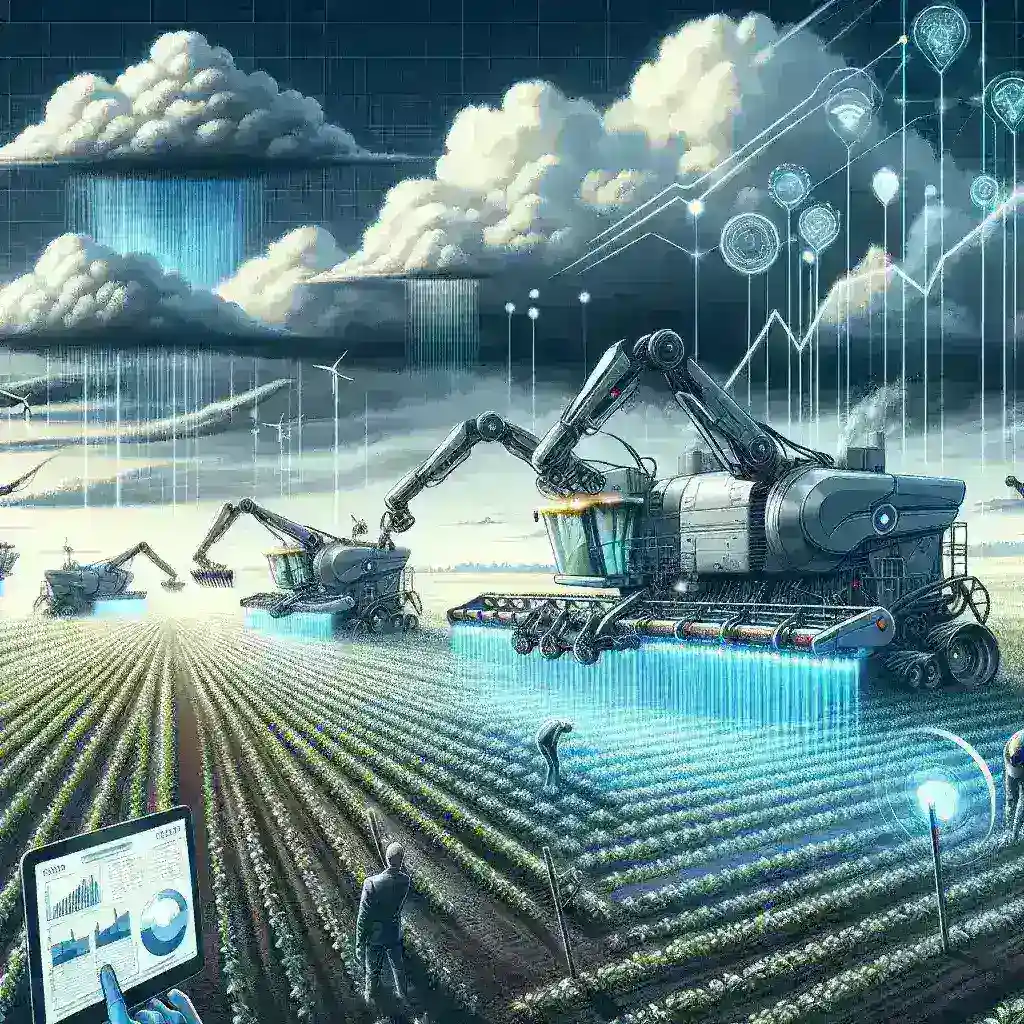Introduction
In the age of technological advancement, agriculture is witnessing a transformative revolution through the integration of artificial intelligence (AI) and robotics. One remarkable development in this field is the advent of AI robotic harvesters that adapt planting patterns based on real-time weather data. This innovation not only addresses the challenges posed by climate variability but also enhances the efficiency and sustainability of agricultural practices. In this article, we will delve into the intricate workings of these AI robotic harvesters, their historical context, future predictions, benefits, challenges, and their undeniable significance in modern agriculture.
The Historical Context of Agricultural Technology
To understand the impact of AI robotic harvesters, it is crucial to reflect on the historical evolution of agricultural technology. For centuries, farmers have relied on traditional methods and tools to cultivate crops and harvest produce. The Industrial Revolution marked a significant turning point, introducing mechanization that increased production efficiency. Over time, advancements in technology led to the development of precision agriculture, which utilizes GPS and data analytics to optimize farming practices. However, the advent of AI and robotics has ushered in a new era, where machines can learn, adapt, and make real-time decisions.
The Mechanism of AI Robotic Harvesters
AI robotic harvesters are sophisticated machines equipped with advanced sensors, data processing capabilities, and machine learning algorithms. These robots can analyze various environmental factors, such as soil moisture, temperature, and humidity, to determine optimal planting patterns. By integrating real-time weather data, these harvesters can make informed decisions about when to plant, irrigate, and harvest crops.
Key Components of AI Robotic Harvesters
- Environmental Sensors: These sensors collect data on soil conditions and weather patterns, providing the necessary information for decision-making.
- AI Algorithms: Machine learning algorithms analyze historical and real-time data to predict the best planting patterns and timings.
- Automated Systems: Robotic arms and machinery perform planting, watering, and harvesting tasks autonomously, reducing the need for manual labor.
Benefits of Using AI Robotic Harvesters
1. Enhanced Efficiency
AI robotic harvesters optimize planting patterns based on current weather conditions. This leads to improved crop yields and reduces waste by ensuring that seeds are planted at the right time and in the right conditions.
2. Sustainability
With the ability to analyze environmental data, these harvesters promote sustainable practices by reducing water consumption and minimizing chemical usage. This not only conserves resources but also protects the environment.
3. Labor Shortages
As the agricultural sector faces labor shortages in many regions, robotic harvesters can fill the gap. They can operate around the clock, ensuring that farming activities are carried out efficiently without delays.
4. Data-Driven Decisions
By leveraging data analytics, farmers can make informed decisions about their crops, from planting to harvesting, leading to increased profitability.
Challenges of AI Robotic Harvesters
1. Initial Investment Costs
While the long-term benefits of AI robotic harvesters are substantial, the initial investment can be a barrier for many farmers. The cost of advanced machinery and technology can be prohibitive, especially for small-scale farms.
2. Technical Expertise
The implementation of AI technology requires a certain level of technical expertise. Farmers may need training to effectively operate and maintain these robotic systems.
3. Dependence on Technology
Over-reliance on robotic systems can pose risks. Technical failures or malfunctions could disrupt farming operations, leading to potential losses.
Future Predictions in Agricultural Robotics
The future of agricultural robotics looks promising. As AI technologies continue to evolve, we can anticipate several key developments:
- Integration of IoT: The Internet of Things (IoT) will play a significant role in enhancing the capabilities of robotic harvesters. Connected devices will enable seamless data sharing and real-time monitoring.
- Advanced Machine Learning: Future robotic systems will employ more sophisticated machine learning algorithms, allowing them to adapt and learn from various environmental scenarios more effectively.
- Collaboration with Farmers: AI robotic harvesters will increasingly collaborate with farmers, providing insights and recommendations while allowing human decision-makers to maintain control.
Real-World Examples
Several farms around the world have successfully implemented AI robotic harvesters to optimize their agricultural practices:
1. Case Study: Blue River Technology
Blue River Technology, a subsidiary of John Deere, has developed “See & Spray” technology that uses computer vision and AI to identify and treat individual plants. This targeted approach reduces herbicide usage and improves crop health.
2. Case Study: Harvest CROO Robotics
Harvest CROO Robotics has created a strawberry-picking robot that uses advanced machine learning to navigate fields and pick ripe strawberries. This innovation addresses labor shortages and increases efficiency in strawberry harvesting.
Conclusion
AI robotic harvesters adapting planting patterns based on real-time weather data represent a significant leap forward in agricultural technology. By harnessing the power of AI, these machines not only optimize farming practices but also contribute to sustainability and efficiency in food production. As we look to the future, the integration of advanced technologies and collaboration between farmers and AI systems will pave the way for a more resilient and productive agricultural sector.




